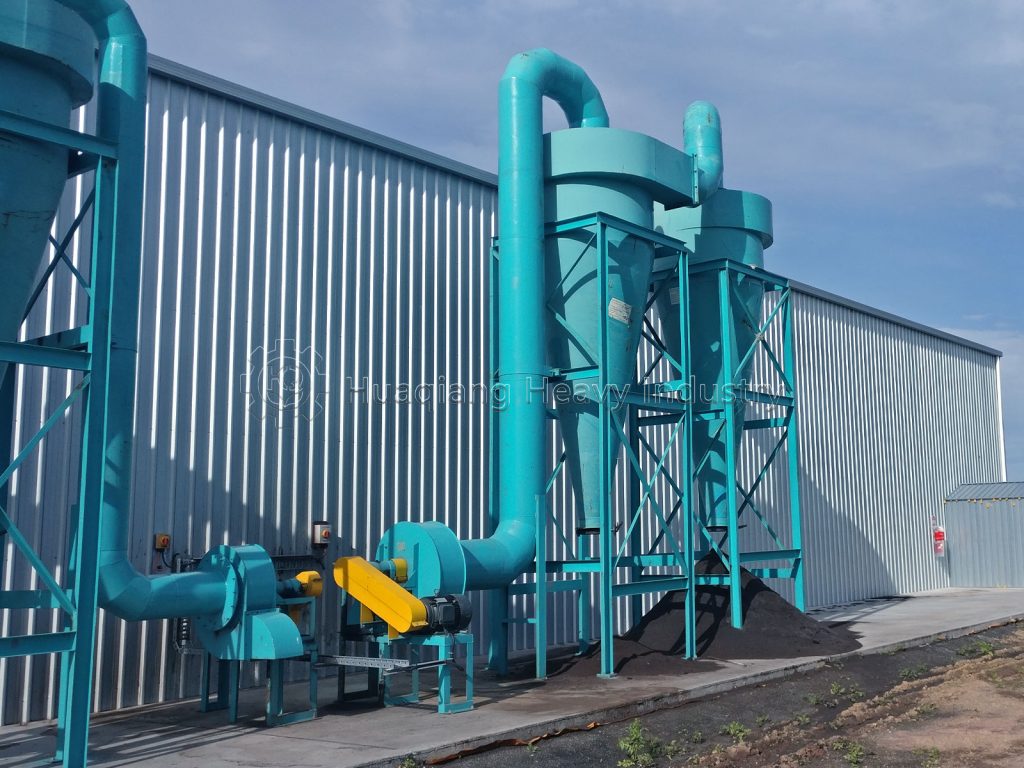In the fertilizer production line, dust pollution not only affects the workshop environment, but also reduces the utilization rate of raw materials. With its targeted design, the cyclone dust collector has become an ideal dust removal partner for the fertilizer production line, protecting the cleanliness of production from raw material crushing to finished product packaging.

It can accurately respond to the dust characteristics of different links. When the chain crusher processes raw materials such as phosphate rock powder and potassium salt, the coarse dust particles generated enter the cyclone dust collector through the tangent line, and are quickly separated under the action of centrifugal force. The purification efficiency is stable at more than 92%, avoiding dust adhesion to the inner wall of the mixing equipment and causing raw material waste.
Facing the wet dust discharged by the half-wet material crusher, the smooth inner wall design of the cyclone dust collector effectively prevents adhesion and blockage. Its conical ash hopper, combined with the timed cleaning device, can discharge wet dust in time to ensure the continuous operation of the equipment. When processing fermented organic fertilizer, it can also reduce the mixing and diffusion of ammonia and dust, improve the air quality in the workshop, and reduce the risk of respiratory diseases among workers.
Compared with traditional bag dust collectors, it is more suitable for the complex working conditions of fertilizer production lines. There is no need to frequently replace filter bags. Facing the corrosive dust commonly seen in fertilizer production, the service life of the stainless steel cylinder can reach more than 5 years, and the maintenance cost is reduced by 40%. The compact structural design can be directly connected to the discharge port of equipment such as crushers and granulators, reducing the pipeline layout and saving 30% of the workshop space.
Today, with increasingly stringent environmental protection requirements, cyclone dust collectors can not only meet the dust emission indicators of fertilizer production, but also improve the utilization rate of raw materials by recycling dust. Choosing it will allow the fertilizer production line to improve its competitiveness in cleanliness and efficiency, and achieve a dual improvement in environmental protection and benefits.
